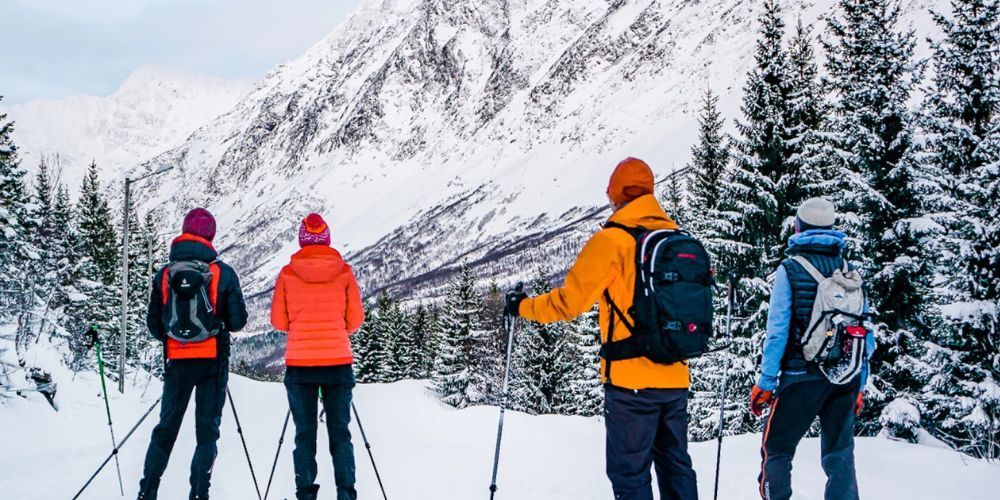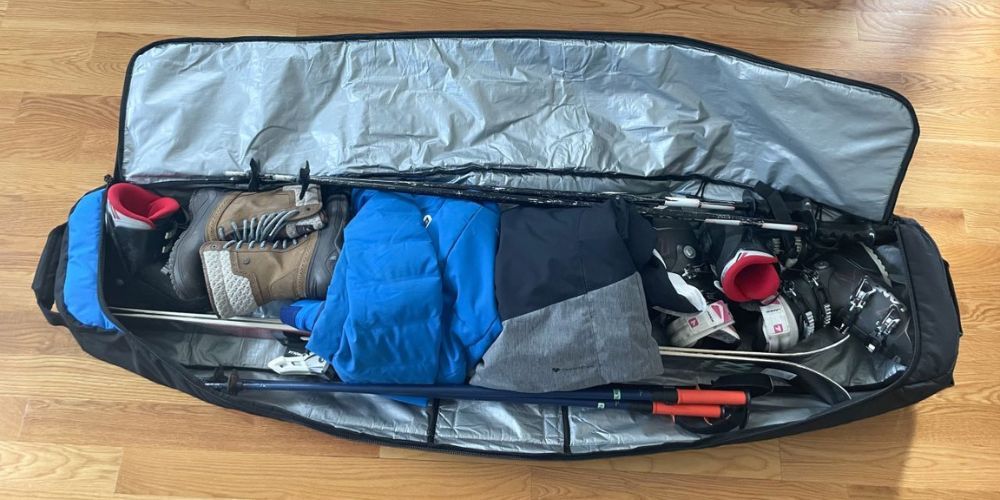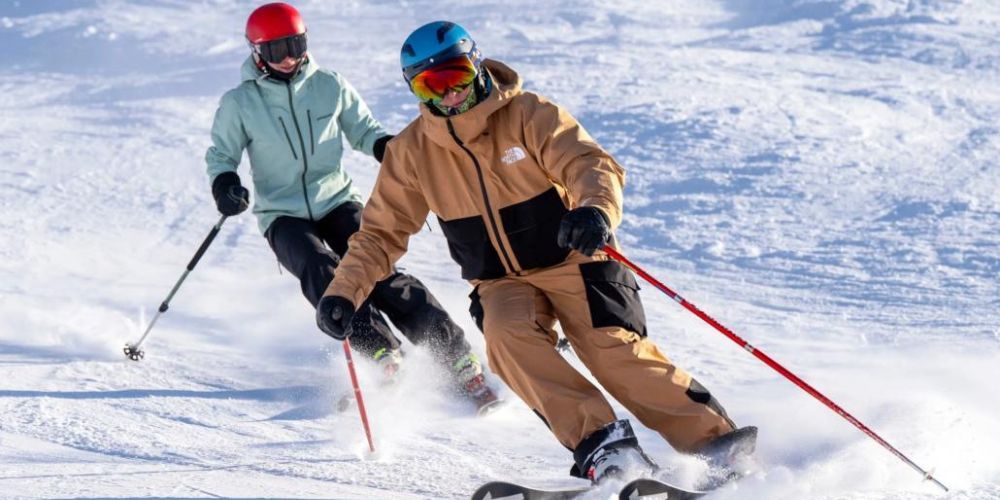William Flaiz is a lifelong athlete and outdoor enthusiast with a deep passion for adventure and sports. With over two decades of experience competing in marathons, triathlons, adventure races, and a wide range of recreational activities, William brings a wealth of knowledge to Sports and Nature Gear. Having explored 49 U.S. states and over 25 national parks, his extensive travels and hands-on experience with gear and gadgets provide readers with practical, expert advice for their own outdoor adventures. Whether it’s running, biking, kayaking, or hiking, William’s insights are invaluable to anyone looking to enhance their experience in the great outdoors. Read his full bio.
Ski Socks: The Best Options for Warmth and Comfort on the Slopes
The thrill of skiing down snowy mountains can quickly turn sour if your feet are cold or uncomfortable. On such days, it's easy to feel frustrated rather than exhilarated. The right pair of ski socks, however, can be a game-changer, ensuring that your feet remain warm and cozy from dawn till dusk. With so many options available, finding the perfect pair might seem daunting.
We have invested considerable time immersing ourselves in user testimonials, engaging with experts, and analyzing top brands to bring you the best recommendations. Modern ski socks feature advanced materials like Merino wool for insulation and sophisticated synthetic blends for breathability. As we explore these key features further, you'll find that choosing the right pair of ski socks is simpler than you might think.
Ski socks are essential for maintaining warmth and comfort while skiing as they protect your feet from cold and reduce friction inside ski boots. When buying ski socks, look for features such as moisture-wicking materials, proper thickness based on your personal preference, cushioning in key areas, and a snug fit to prevent blisters.
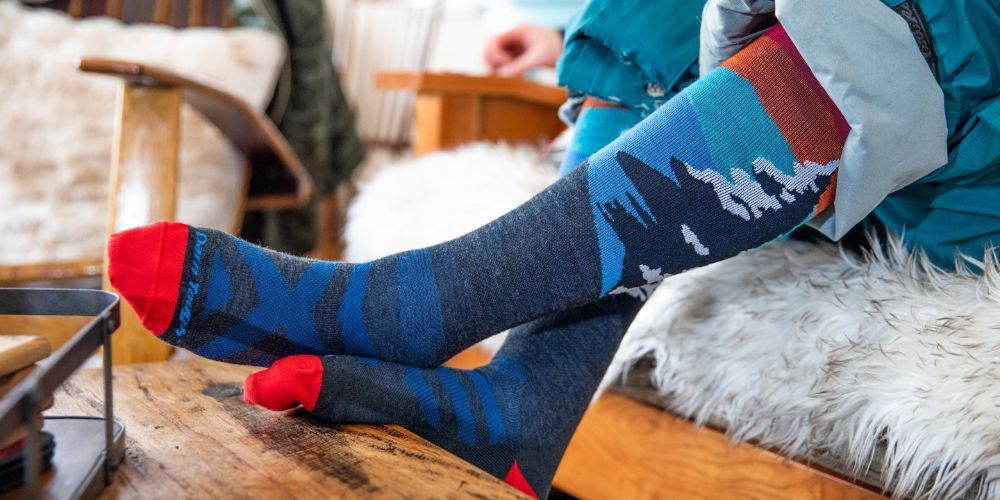
Top Ski Sock Features
1. Temperature Regulation
When it comes to ski socks, effective temperature regulation can be the difference between an enjoyable day on the slopes and one filled with discomfort.
While sufficient insulation is undoubtedly important for keeping your feet warm, the ability to manage heat and moisture is equally vital. High-quality socks often use materials like merino wool or specially engineered synthetic blends that offer both warmth and breathability. Merino wool, prized for its natural moisture-wicking properties, helps to keep your feet dry while effectively trapping heat. Synthetics might also provide enhanced moisture control, ensuring you stay comfortable and avoid that clammy feeling when temperatures fluctuate.
2. Seamless Design
Another hallmark feature of top-tier ski socks is their seamless design. This innovation helps reduce stress points within the sock construction, particularly at the toe area where blisters and chafing are notorious threats during long skiing sessions.
A seamless toe closure provides a smooth interface between your skin and the sock, significantly lowering the risk of irritation. Such meticulous attention to detail makes these socks perfect for extended outings on the mountain where every little discomfort can compound into something far more significant over time.
3. Compression Zones
Furthermore, compression zones are becoming increasingly popular in modern ski sock designs. These zones are specifically engineered to enhance blood circulation in your lower legs and feet, which can alleviate muscle fatigue and soreness after a long day on the slopes.
In fact, a study conducted in 2023 reported that 68% of skiers felt less fatigue while incorporating compression socks into their gear arsenal. This thoughtful design not only supports recovery but also gives you that extra boost of energy when hitting those challenging runs.
Having explored these essential features of ski socks, let’s shift our focus to the various types of materials used in crafting them, which play a crucial role in performance and comfort on the slopes.
Material Choices: Wool vs. Synthetics
The choice of material can make or break your experience when skiing, especially when it comes to your feet. Merino wool stands out as a premium option beloved by many skiers. This natural fiber excels in temperature regulation, keeping your feet warm in frigid conditions while also managing moisture effectively. In fact, merino wool can absorb moisture away from your skin, helping prevent that uncomfortable clamminess that leads to cold toes. However, this luxury does come at a price; merino wool socks tend to be more expensive than their synthetic counterparts.
Brands like Smartwool have mastered the art of using merino wool, crafting socks that prioritize comfort and longevity. When I first tried on a pair of Smartwool ski socks, I was pleasantly surprised by how snug yet breathable they felt against my skin. The natural properties of wool mean you won’t encounter that "sweaty foot" feeling often associated with other materials, which can ruin a day on the slopes.
On the flip side, synthetic materials like nylon and polyester offer their own benefits. These options are often lauded for their durability and affordability, making them a popular choice among many skiers. They are engineered to wick moisture away as well, though they might not retain warmth as effectively as wool—this is important if you're planning on spending long hours outdoors in chilly temperatures.
Your choice between wool and synthetic blends will depend largely on your priorities on the slopes—whether it's warmth and comfort or durability and cost-effectiveness. Understanding these differences helps guide you to options that best suit your needs in varying conditions.
Moisture-Wicking and Breathability
Keeping your feet dry, especially during a full day on the slopes, is crucial—not just to avoid that icy sensation but also to prevent blisters that can ruin an otherwise great skiing experience. This is where moisture-wicking and breathability come into play, making them key considerations in selecting the right ski socks. The notion is simple: according to a survey from 2022, an impressive 75% of skiers indicated that moisture-wicking properties were at the top of their sock priorities. This statistic underscores the awareness among skiers about how critically important it is to maintain dryness.
How It Works
Moisture-wicking fabrics serve as a barrier against sweat by drawing it away from your skin and transporting it to the outer layer of the fabric where it evaporates rapidly. Imagine your foot encased in a cozy, warm environment while still being able to breathe—this happens because some fabrics, like Merino wool and high-quality synthetic blends, are designed to do just that. They not only trap warmth but also enable moisture to escape, preventing that clammy feeling that often leads to discomfort.
When shopping for ski socks, look for features like mesh ventilation panels integrated into the design. These panels work like tiny windows that allow air circulation around your feet, further enhancing breathability while keeping them insulated against the cold. So whether you're carving down a powdery slope or taking a break in the lodge, these elements ensure your feet remain comfortably dry.
Moreover, while all socks might claim moisture-wicking properties, not all are created equal. Some will begin to lose their effectiveness after repeated washes or long-term wear. Investing in high-quality socks with robust moisture management technology will yield better long-term results when it comes to comfort and performance on the slopes.
As we explore further, understanding how thickness impacts performance will help you make more informed choices when gearing up for your next skiing adventure.
Selecting the Right Thickness
The thickness of your ski socks plays a critical role in ensuring you stay warm, comfortable, and maintain proper control while skiing. Users often feel overwhelmed by the variety available. Being informed about these choices helps you make decisions that will complement your specific skiing style and conditions.
Types of Thickness
- Ultralight: Best for those who prioritize a precise fit within their ski boot, although they may not offer significant warmth.
- Lightweight: Ideal for skiers looking for a compromise between control and insulation, making them suitable for milder conditions.
- Midweight: This option strikes a nice balance; it provides added warmth while still maintaining comfort, though some users may find these socks slightly bulkier.
- Heavyweight: Designed for maximum warmth in frigid temperatures, but they can sometimes compromise the feeling and sensitivity you get from your boots.
As an enthusiastic skier, I often opt for lightweight or midweight socks depending on the day's weather. They keep my feet warm without sacrificing sensitivity inside my boots. For instance, during spring skiing, lightweight socks provide enough warmth without overheating due to changing weather conditions. On colder days, midweight socks are my go-to choice because they ensure my toes remain cozy while allowing me to navigate tricky runs comfortably.
It's essential to evaluate personal preferences when deciding on sock thickness. What feels perfect for one skier might be too tight or too loose for another. Finding that sweet spot makes all the difference in performance and enjoyment.
Additionally, consider the fit of your ski boot when selecting the sock thickness. A tightly fitting boot can accommodate ultralight or lightweight socks better than heavyweights, aiding in precision and control while turning or carving down the slopes. However, if you have more room in your boot or love the snug warmth of a heavyweight sock, then indulging in a thicker option could enhance your experience during long days in icy weather.
Understanding these factors is essential as we continue to explore how to achieve the best possible fit and comfort for your skiing adventures.
Ensuring Fit and Comfort
Ensuring that your ski socks fit well can mean the difference between a day of enjoyment on the mountain and a frustrating experience plagued by discomfort. Think of your ski socks as a second layer of skin; they should feel snug but not constricting. When you slide into your ski boots, those socks play an essential role in keeping your feet warm, dry, and secure, helping to create a direct connection to your equipment.
Fitting Tips
Begin with accurate measurements—make sure to measure your foot size carefully and align it with the sock size chart provided by the brand. A common mistake is choosing a sock based solely on size categories like small, medium, or large without checking actual dimensions. Each brand may have slight variations, and a misconception about size can lead to an awkward fit.
Be mindful of seam placement; seams should lie flat and be located away from high-friction areas of the foot. Poorly placed seams can cause blisters or sore spots during long runs, turning an exhilarating day on the slopes into an excruciating one.
Another key aspect is ensuring there is some stretch in the material. Quality ski socks are designed with elasticity in mind, allowing them to contour naturally to your foot’s movements without bunching up. When you put your boots on over your socks, they shouldn’t collapse into folds or create pressure points that could lead to pain or numbness later on.
A little trick I’ve learned from plenty of time on the slopes is to wear the socks around the house before venturing out. This practice allows me to get accustomed to how they feel while walking around and gives a chance to assess if any adjustments are necessary. If you notice any uncomfortable areas during this trial run, consider trying another style or size before hitting the slopes for real.
By focusing on these fitting details—size accuracy, seam placement, and elasticity—you’ll set yourself up for greater comfort as you explore all the benefits that well-chosen socks can offer while skiing. Let's now turn our attention toward cushioning and support.
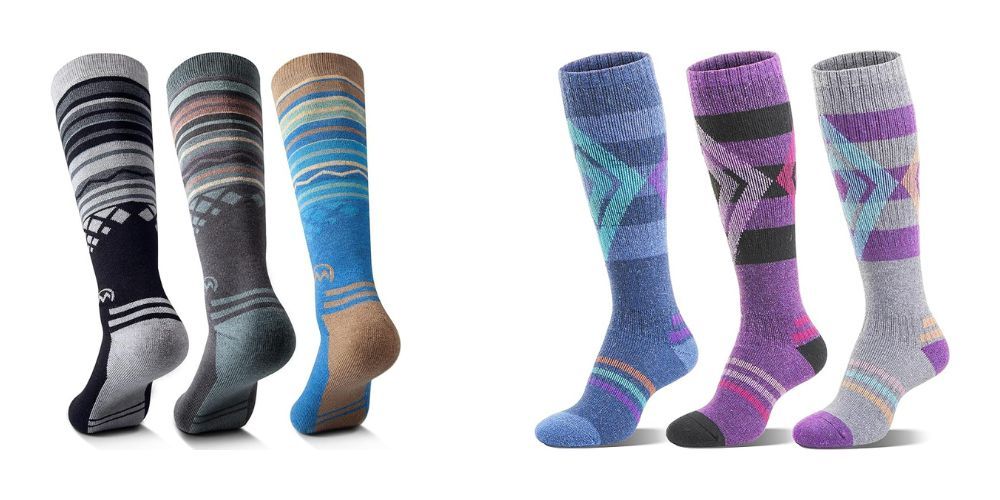
Additional Benefits: Cushioning and Support
The right ski socks can make seemingly small yet impactful contributions to your performance on the slopes. Cushioning is one of those unsung heroes, providing not just a buffer between your foot and the hard boot but also a critically necessary layer of protection. When you’re skiing, each turn, jump, or even simple glide sends vibrations through your feet. Without proper cushioning in targeted areas—such as the heel and ball of the foot—these impacts could lead to discomfort or even injuries.
Types of Cushioning
Depending on the brand and model, you’ll find different kinds of cushioning. Some socks offer thicker padding, which can feel luxurious, especially during long sessions, while others focus on more technical materials that provide shock absorption without bulk. The key here is balance; while extra cushioning can keep your feet cozy, too much can impede your ability to feel the subtleties of the terrain beneath you—a critical aspect for advanced skiing. So finding targeted cushioning becomes essential for both protection and responsiveness.
Shifting our focus to another essential facet of ski socks...
Support Features
In addition to cushioning, support features elevate ski socks from mere fabric tubes to sophisticated performance gear. Arch support plays a pivotal role in preventing fatigue over long days on the slopes; this feature helps maintain proper foot alignment and reduces strain on your muscles. Ankle stabilization goes hand-in-hand with arch support, cradling your ankles and minimizing the risk of rolling or twisting them during dynamic movements.
When considering ski socks, look for brands like Darn Tough that engineer specific support zones into their products. Those well-constructed support features are not just marketing gimmicks; they genuinely help improve stability and comfort throughout your skiing adventure. Imagine being able to traverse steep slopes and carve clean turns with less worry about foot strain—this is what proper support can offer you.
By understanding how cushioning and support work together in ski socks, you'll be better equipped to decide which pairs will optimize your time on the slopes. As we continue, let’s explore how to care for these vital pieces of equipment to extend their life and maintain performance.
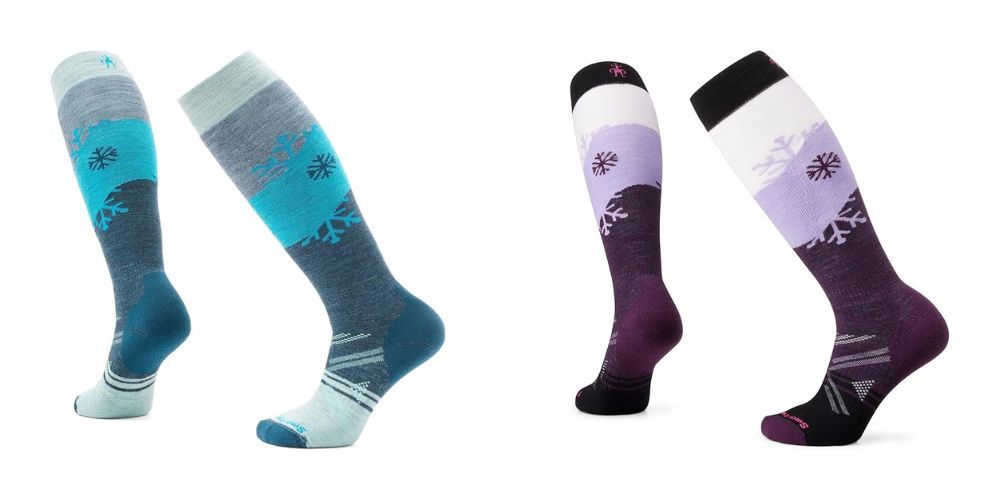
Care and Maintenance for Longevity
To extend the lifespan of your ski socks, proper care and maintenance are essential and should never be overlooked. Regular attention to how you wash, dry, and store your socks can significantly enhance their durability and performance on the slopes. When ski socks are well cared for, they can provide consistent warmth and comfort season after season.
Washing Tips
- Use Gentle Detergents: Choosing the right detergent is key; harsh chemicals can break down vital fibers in the fabric over time. Opt for milder detergents that maintain fabric integrity while effectively cleaning.
- Avoid High Heat: To truly protect your ski socks, wash them in cold water. The heat from hot water or dryers can lead to shrinkage, compromising their fit. Air drying is recommended instead of using a tumble dryer since it maintains the sock's shape and elasticity while reducing the risk of damage.
Following these simple washing tips can typecast you as someone who values not only quality gear but also an enjoyable skiing experience.
Storage Advice
Once you've given your ski socks a thorough cleaning, it's equally important to store them correctly to avoid problems later. Store your ski socks in a dry, cool place to prevent mildew build-up and deterioration of the material. Avoid leaving them inside ski boots, as this can create an environment where moisture and bacteria thrive, leading to unpleasant odors and even discoloration.
Instead of tossing them into a drawer haphazardly post-skiing, consider organizing them neatly by rolling pairs together or storing them in breathable mesh bags to promote airflow. This practice greatly helps in keeping them fresh and ready for your next adventure on the snow.
Consistently following these storage practices will ensure that your ski socks remain functional and comfortable season after season.
By putting these tips into action—washing wisely and storing thoughtfully—you’ll help your ski socks last longer while ensuring that their specialized functions are preserved. Proper care transforms ordinary gear into enduring companions on the slopes, allowing you to focus on what matters: making memorable runs in the beautiful outdoors.
As such, maintaining the performance of your ski socks goes hand-in-hand with maximizing your skiing experience. A little effort in care can yield significant rewards on those chilly slopes.
AUTHOR
Nature's Playbook
As an Amazon Associate I earn from qualifying purchases.





